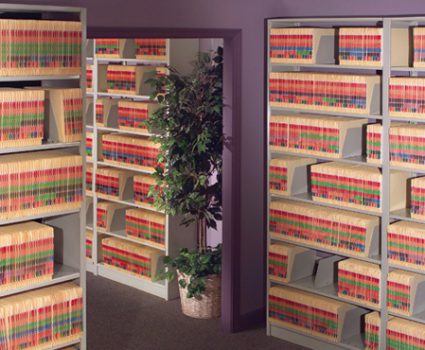
How to reduce storage costs and make better use of floorspace – Part One
Most records managers have probably lost a bit of sleep over the years dealing with the issue of physical records. Storing and managing physical records has never been an easy task and the challenge is unfortunately getting harder.
Why?
On the one hand, physical record volumes have been growing steadily. Despite promises that paper would go the way of the dodo in the electronic age, the reality is quite the opposite.
The high cost of office space is another factor putting the squeeze on paper records. After a brief slowdown, commercial real estate costs are once again on the rise in most major urban centers. As a consequence, the cost of physical records storage is coming under increased scrutiny.
Together, these two trends are forcing more and more records managers to address the paper issue. In our next two blog posts we’ll walk through a series of steps to help you reduce the volume of paper you store and save on space and storage costs in the process.
A multi-step process
Dealing with paper records requires work on several fronts, which includes RIM policies as well as the actual practices used for paper handling and storage. The first step is to establish or update your program of retention scheduling and records disposal.
This includes five related activities:
Establish a functional records classification.
As the cornerstone of any effective records management program, this tool divides records into categories based on the business activities which they support. By focusing on the reason why records are created or received in the first place, functional classification makes it easier to identify your legal obligations in terms of records retention.
Records retention scheduling.
When you know which class a record belongs to, you are then able to set its retention period based on legal requirements for that class. When you know how long each record needs to be retained, you are better able to cut back on the unnecessary storage of expired records.
Purging non-records.
While many of an organization’s documents are official records of its business, many of them are not. These include convenience copies, outdated drafts, obsolete reference sources and other redundant materials. A regular program of document purging is essential to reduce the burden of paper storage.
Off-site and near-site storage.
Storing records outside of your main operational centers is a great way to cut down on storage costs. Moving inactive records into off-site storage is one traditional approach. Today, many organizations are also embracing near-site storage for active records. It is now possible to move active records to a third-party facility and enjoy same-day retrieval and delivery on request. Again, this cuts down significantly on on-site storage costs.
Regular records destruction.
Disposal of expired records is a key part of reducing your records storage footprint. However, many organizations balk at this final step due to uncertainty and lack of clear policies for destruction and disposal. It is best to establish a clear, document chain of approval for document destruction. This eliminates the doubt that causes many organizations to retain expired records. It also provides legal evidence in case the destruction process is ever called into question.
Together, these steps provide a great starting point to save costs and free up storage space. However, there is a lot more you can do in terms of storage practices. We will dive into those in next week’s blog post.
Next Steps
- For more tips on dealing with paper records, download our free white paper, Doing More with Less, Space Planning in Records Management.
- Get our free guide to creating an effective retention schedule.
- Talk to one of our experts to get help with your paper records challenges.





